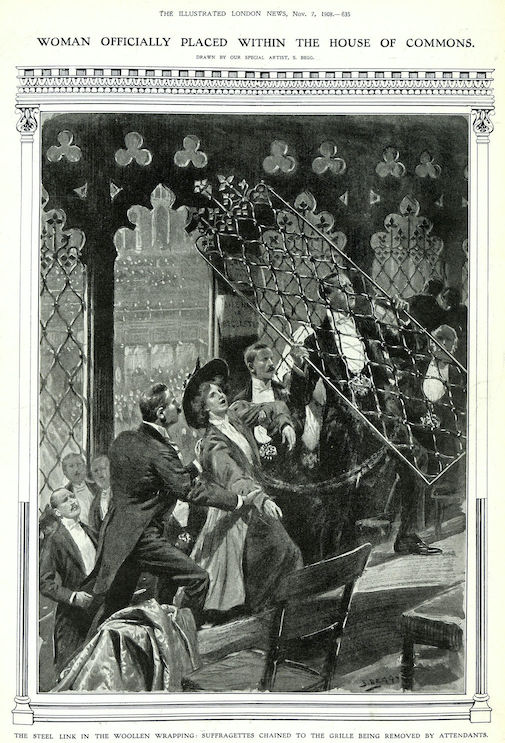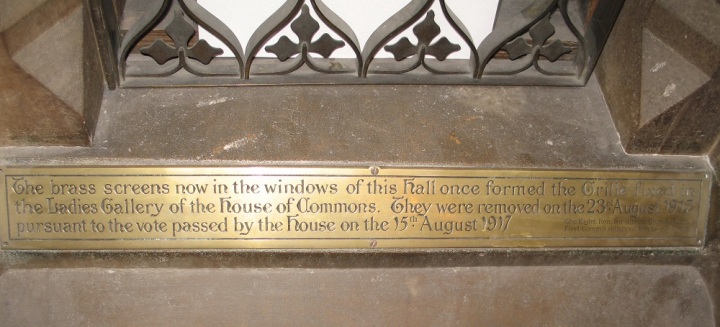Why suffragettes targeted the Ladies’ Gallery of the House of Commons
In my novel, Death at Crookham Hall, I describe a suffragette protest that takes place in May 1914 in the Ladies’ Gallery of the House of Commons. I mention in my book that my protagonists have been inspired by an earlier protest that took place there in 1908.
The real-life protest involved three suffragists called Muriel Matters, Helen Fox and Violet Tillard of the Women’s Freedom League.

The Illustrated London News, 7 November 1908
The Ladies' Gallery had been created in the new Palace of Westminster by Charles Barry after the fire of 1834. It was high above the Speaker’s Chair and gave a poor view because of its steep angle. The unglazed window arches were fitted with heavy metal grille panels to screen the ladies in the Gallery from the debating chamber.

View through the grille of the Ladies' Gallery
The Gallery was cramped and hot, and the grille made it difficult to see or hear anything below. Famous suffragist Millicent Fawcett, the first woman to be commemorated with a statue in Parliament Square, wrote, “One great discomfort of the grille was that the interstices of the heavy brasswork were not large enough to allow the victims who sat behind it to focus. It was like using a gigantic pair of spectacles which did not fit and made the Ladies' Gallery a grand place for getting headaches.”

As a result, the grille became a symbol of women's exclusion from Parliament and a target for suffragists.
On the night of 28 October 1908, Muriel Matters, an Australian-born lecturer and journalist, along with Helen Fox, chained themselves to the grille of the Ladies' Gallery, shouting, “We have been behind this insulting grille too long”. Meanwhile, Violet Tillard lowered a proclamation down to the politicians using pieces of string.
The police arrived but couldn’t unchain Muriel and Helen from the grille. Eventually, they had to remove the grilles panels from the arches with the women still attached. They were taken to a nearby committee room, a blacksmith was called, and the chains filed through.

Following a resolution in the Commons on 15 August 1917, the grille was finally removed from the arches of the Ladies' Gallery on 23 August 1917.

The notice says, "No demonstration of any kind can be permitted in the Gallery"
The London Museum (now the Museum of London) wrote to ask for a grille panel and was sent one on permanent loan. It is still on display in the Museum today. The remainder of the grille was kept in the Palace of Westminster. In October 1917, the majority of the grille panels were placed in windows around Central Hall, now called Central Lobby.
A brass plaque by the Admissions Order Lobby notes where the grille came from. The plaque reads, “The brass screens now in the windows of this hall once formed the Grille fixed in the Ladies Gallery of the House of Commons. They were removed on the 23rd August 1917 pursuant to the vote passed by the House on 15 August 1917.”

In 2010, one grille panel was loaned to the South Australian Parliament in honour of Muriel Matters. In 2015, another was installed in the new Parliamentary Education Centre.
On 10 May 1941, during the blitz on London, German bombers destroyed the Chamber of the House of Commons and the Ladies’ Gallery was lost forever.

